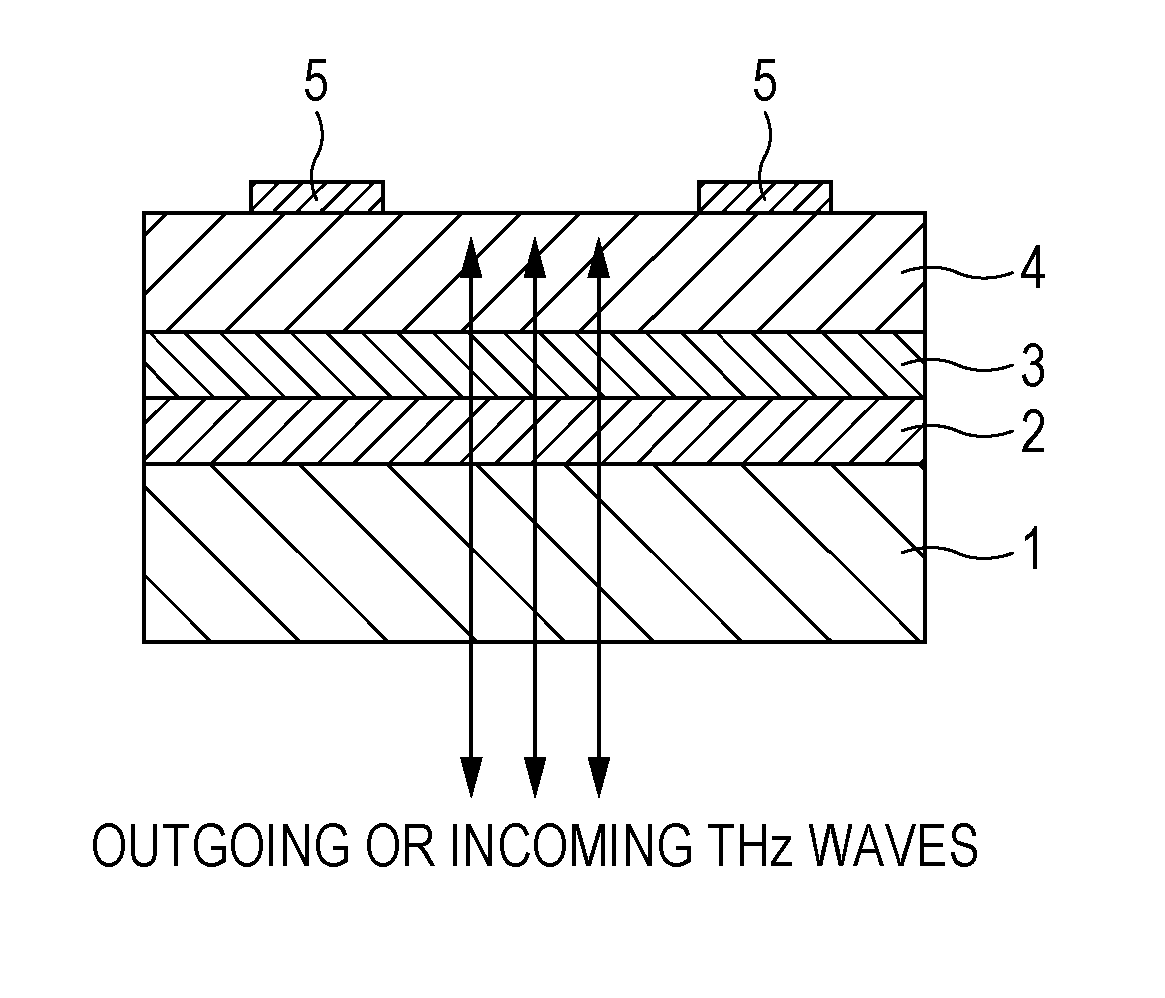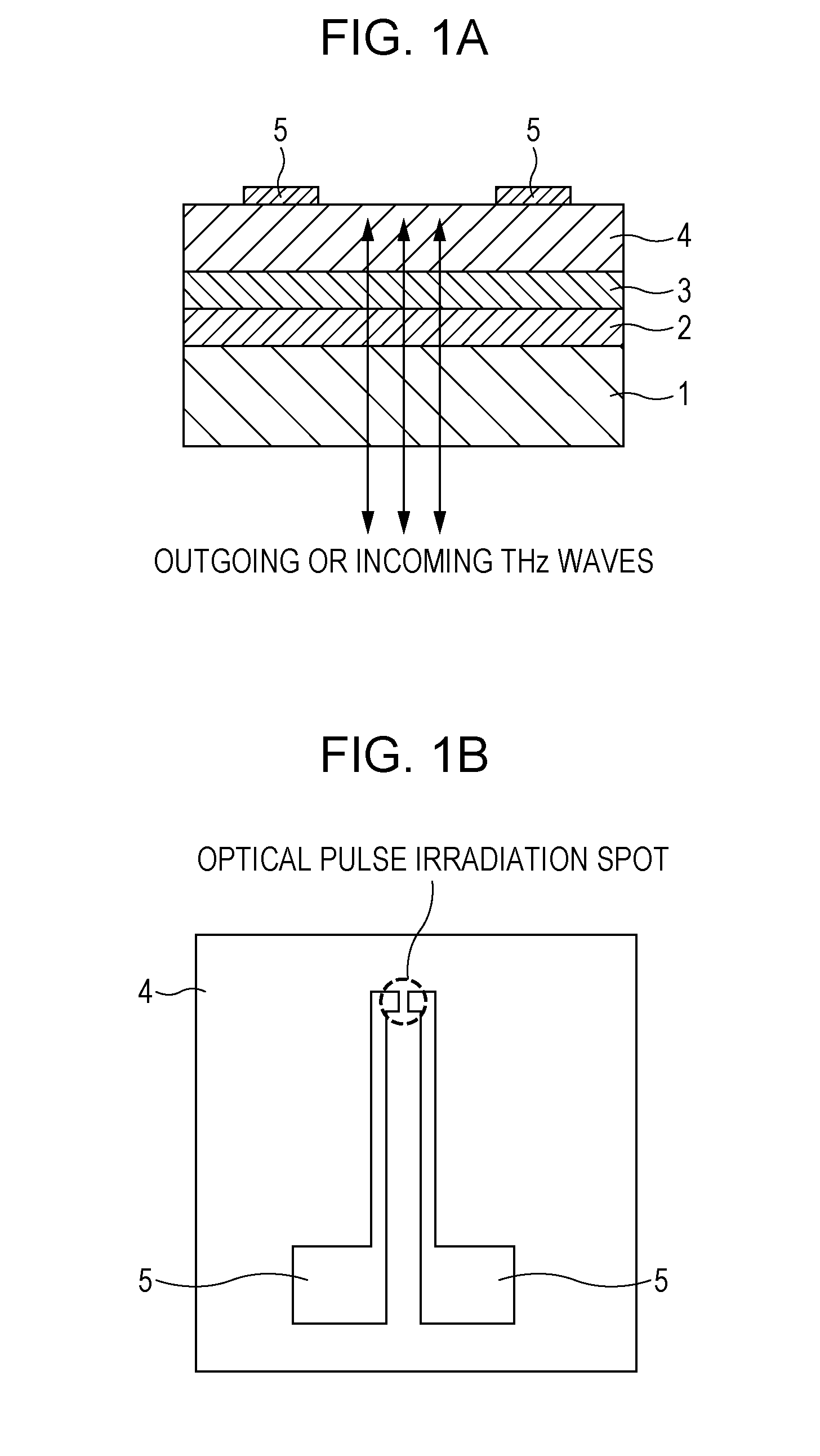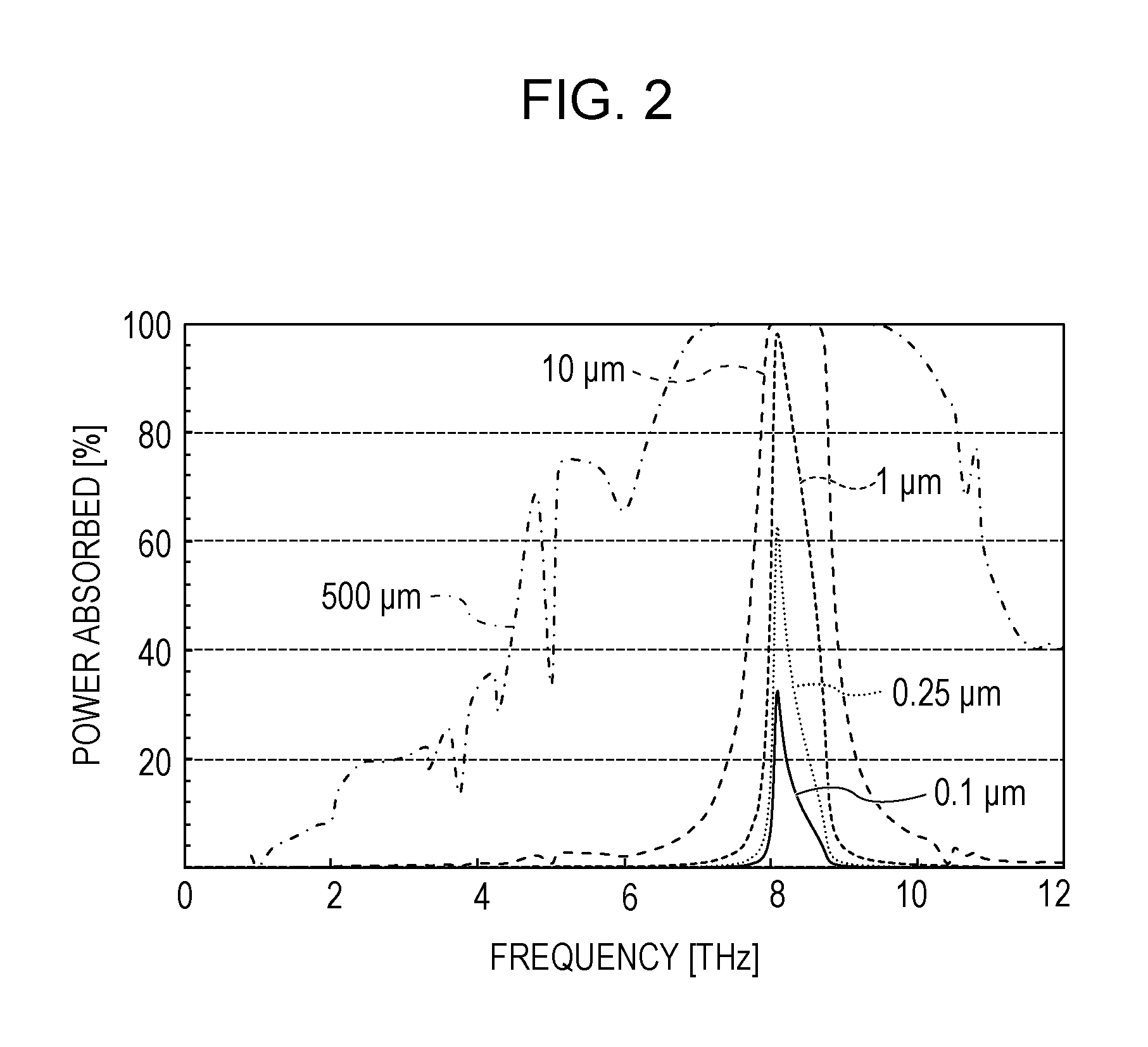Photoconductive antennas, method for producing photoconductive antennas, and terahertz time domain spectroscopy system
- Summary
- Abstract
- Description
- Claims
- Application Information
AI Technical Summary
Benefits of technology
Problems solved by technology
Method used
Image
Examples
embodiment 1
[0025]A first embodiment of the invention is described with reference to FIGS. 1A and 1B. FIGS. 1A and 1B are a cross-sectional view and a top view, respectively, of a photoconductive antenna according to this embodiment. FIGS. 1A and 1B illustrate a photoconductive antenna produced by growing crystals of Ge (a Ge layer) 2, GaAs (a first semiconductor layer that contains Ga and As) 3, and LT-GaAs (a second semiconductor layer that contains Ga and As) 4 on a Si substrate 1 in this order and then placing more than one electrode 5.
[0026]Low-resistivity silicon would lead to a great loss of THz waves due to absorption by free carriers. Thus the Si substrate 1 is made of semi-insulating Si, preferably having a resistivity of 10 Ω·cm or more. In this embodiment, silicon grown as a crystal with a resistivity of 3 kΩ·cm by the FZ process, which generally provides high-resistivity Si, is used as the Si substrate 1. The orientation of the substrate is (100), and substrates that have an off-an...
embodiment 2
[0038]Embodiment 2 is described. As illustrated in FIG. 3, this embodiment has a buffer layer 6, which is a thin film of Si(1-x)Ge, where x is a composition ratio, and has an increasing gradient of the composition ratio x in the direction of film growth, i.e., from the Si substrate 1 side to the GaAs 3 side. More specifically, the composition ratio x=0 at the end on the Si substrate 1 side, then x gradually changes, and x=1 at the end on the GaAs 3 side. The thin film of Si(1-x)Gex can be grown in the crystalline form by techniques such as reduced-pressure CVD (chemical vapor deposition) using monosilane (SiH4) and monogerman (GeH4). The composition ratio x can be controlled by the flow rates of the gases; gradually changing the flow rates of the gases leads to the composition ratio x gradually changing in the Si(1-x)Gex film.
[0039]The use of a thin film of Si(1-x)Gex as the buffer layer 6 provides a lattice constant gradient that extends from the Si substrate 1 to GaAs 3. As a resu...
embodiment 3
[0041]Embodiment 3 is described. As illustrated in FIG. 4, this embodiment has a current barrier layer 7 between GaAs 3 and LT-GaAs 4. The current barrier layer 7 can be, for example, a monolayer of AlxGa(1-x)As (0.5≦x≦1) or similar compound semiconductors or an alternate stack of AlxGa(1-x)As (0.5≦x≦1) and GaAs or similar combinations of compound semiconductors. This current barrier layer 7 can be grown in the crystalline form by techniques such as MBE (molecular beam epitaxy).
[0042]This current barrier layer 8 prevents the current that flows through LT-GaAs 4 between the electrodes 5 substantially parallel to the Si substrate 1 from flowing into the layers of GaAs 3 and Ge 2. This means that AlxGa(1-x)As in the current barrier layer 7 serves as an interband barrier and therefore should be about 10 nm thick to prevent tunnel currents. This also applies when the current barrier layer 7 is an alternate stack of AlxGa(1-x)As (0.5≦x≦1) and GaAs; each layer of AlxGa(1-x)As should be abo...
PUM
 Login to View More
Login to View More Abstract
Description
Claims
Application Information
 Login to View More
Login to View More - R&D
- Intellectual Property
- Life Sciences
- Materials
- Tech Scout
- Unparalleled Data Quality
- Higher Quality Content
- 60% Fewer Hallucinations
Browse by: Latest US Patents, China's latest patents, Technical Efficacy Thesaurus, Application Domain, Technology Topic, Popular Technical Reports.
© 2025 PatSnap. All rights reserved.Legal|Privacy policy|Modern Slavery Act Transparency Statement|Sitemap|About US| Contact US: help@patsnap.com



